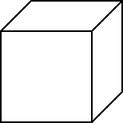The title is from today's noon post, Core.
It also appears, quoted from Popovič, in Susan Bassnett's
Translation Studies (third edition, Routledge, 2002)—
"It is an established fact in Translation Studies that if a dozen
translators tackle the same poem, they will produce a dozen
different versions. And yet somewhere in those dozen versions there
will be what Popovič calls the ‘invariant core’ of the original poem.
This invariant core, he claims, is represented by stable, basic and
constant semantic elements in the text, whose existence can be
proved by experimental semantic condensation. Transformations, or
variants, are those changes which do not modify the core of meaning
but influence the expressive form. In short, the invariant can be
defined as that which exists in common between all existing
translations of a single work. So the invariant is part of a dynamic
relationship and should not be confused with speculative arguments
about the ‘nature’, the ‘spirit’ or ‘soul’ of the text; the ‘indefinable
quality’ that translators are rarely supposed to be able to capture."
"A writer hopes to leave behind a work no one forgets…."
— Song sung on NBC's Smash tonight
Fulsere vere candidi mihi soles….
— André Weil, The Apprenticeship of a Mathematician
nam unguentum dabo, quod meae puellae
donarunt Veneres Cupidinesque….
— Catullus, quoted in Bassnett's Translation Studies




